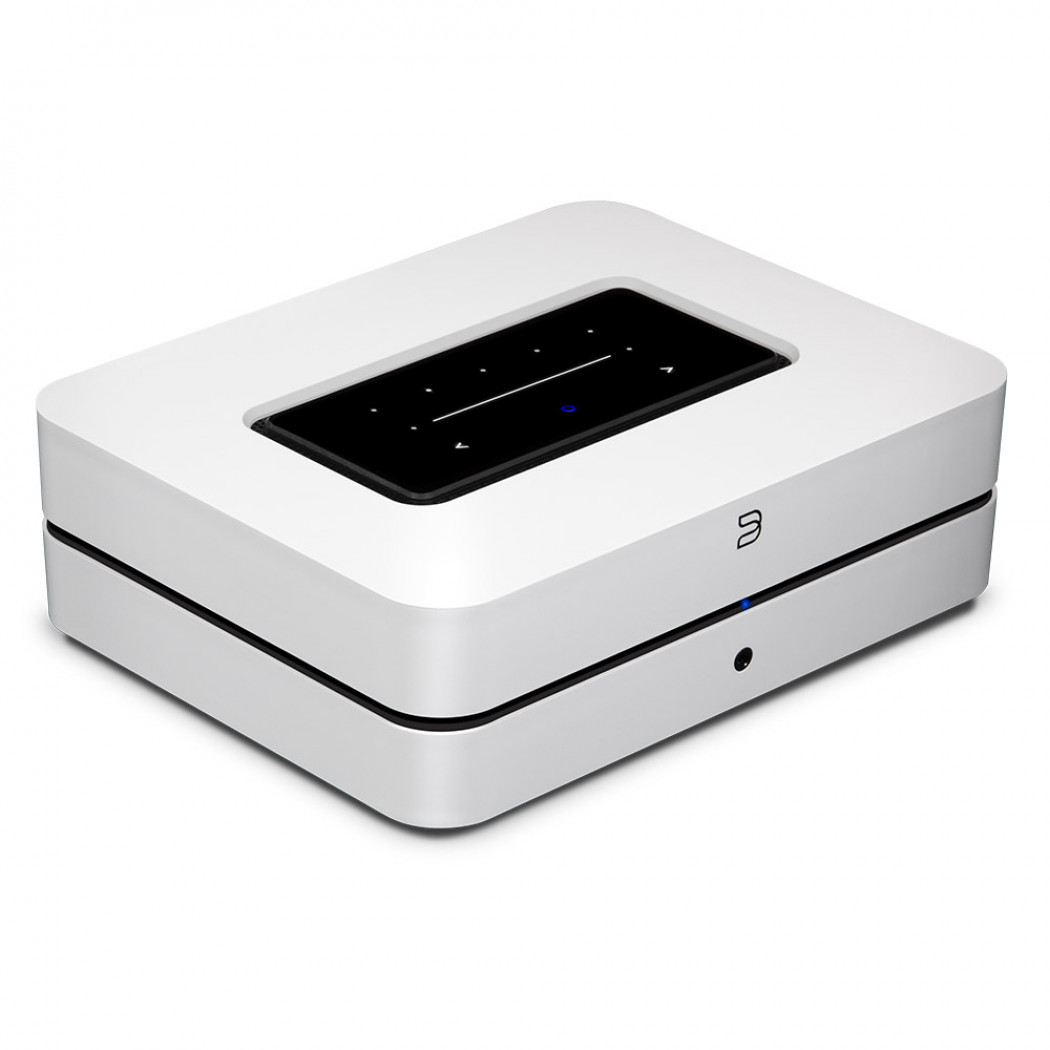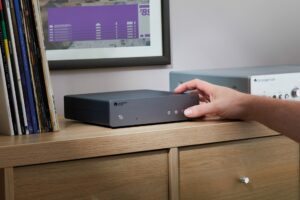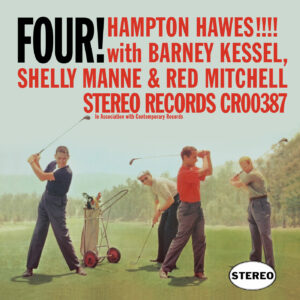2022 Golden Ear: Bluesound Powernode Gen 3 Streaming DAC and Integrated Amplifier
- REVIEW
- by Muse Kastanovich
- Feb 03, 2023

Bluesound Powernode Gen 3 Streaming DAC and Integrated Amplifier
$949
The Bluesound Powernode Gen 3 is an all-in-one stereo (or multi-room) system for modern times, incorporating wired and wireless streaming, DAC, analog inputs, and power amp, with full control from the BluOS app, which can be run on (almost) any computing or mobile platform. It includes everything you might need except for phono preamplifier, speaker cables, or speakers, in a compact and unobtrusive chassis. The real story here is the surprisingly good sound for the price. The Powernode Gen 3 easily fits into systems that include other components (even cables) that cost as much or more than the Bluesound unit itself without embarrassing itself sonically. Slightly on the mellow and forgiving side of neutral, it should pair well with a wide variety of speakers and rooms; yet it still provides plenty of detail and microdynamics for a surprising amount of satisfaction from all genres of music. Also surprising is the amount of power available—130W (8 ohms) and 220W (4 ohms) of IHF dynamic power for musical peaks.
Tags: AMPLIFIER AWARDS BLUESOUND DAC DIGITAL GOLDEN EAR INTEGRATED STREAMING

By Muse Kastanovich
My love of music began in the Albuquerque Boys’ Choir at age ten. Then I was a member of many other fine classical choirs over the years (most recently Coro Lux). I also studied opera with Paul Barrientos, and had solo roles in local opera and musical theater. But in college I was still largely an introvert, and would sit and listen to (mostly rock) LPs and cassettes on my modest stereo system in my dorm room for hours on end. I started out reading Stereo Review magazine, which had the incredulous view that all CD players and amplifiers sounded the same. Only a few years later in my career I would find myself being able to hear sonic differences by changing just a single resistor in an amp I was building! In the 90s I slowly put together a real audiophile system, moved to Boulder, Colorado, and read Stereophile magazine voraciously. I started a couple of local rock bands where I sang and played bass. When I found out that Corey Greenberg (my favorite writer) was going to be leaving Stereophile, I wrote a letter to the editor John Atkinson. Despite my young age and lack of experience, he was interested, and brought me on as a contributor in 1995. I was fortunate enough to spend time with J. Gordon Holt (founder of Stereophile) and Steven Stone, both of whom lived in Boulder at the time. I also worked with and learned from Robert Harley, Tom Norton, Robert Reina, and Wes Philips. I look for high resolution in an audio system. Those components which can expose the most subtleties and differences in the music performance and in other parts of the reproduction chain are my favorites. I find that this quality helps improve the illusion of performers actually in the room with me, and lets me hear every individual part better—even when listening to what I consider to be the acid test, full classical orchestra with choir.
More articles from this editorRead Next From Review
See all
Oswalds Mill Audio K3 Turntable
- Apr 12, 2024

2023 Golden Ear: Schiit Freya S Preamplifier
- Apr 12, 2024




















